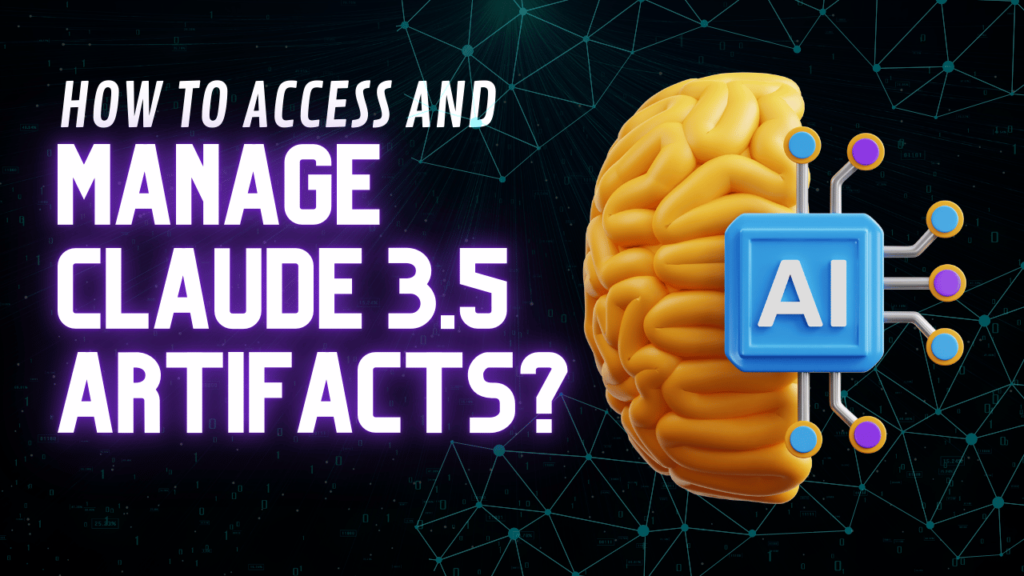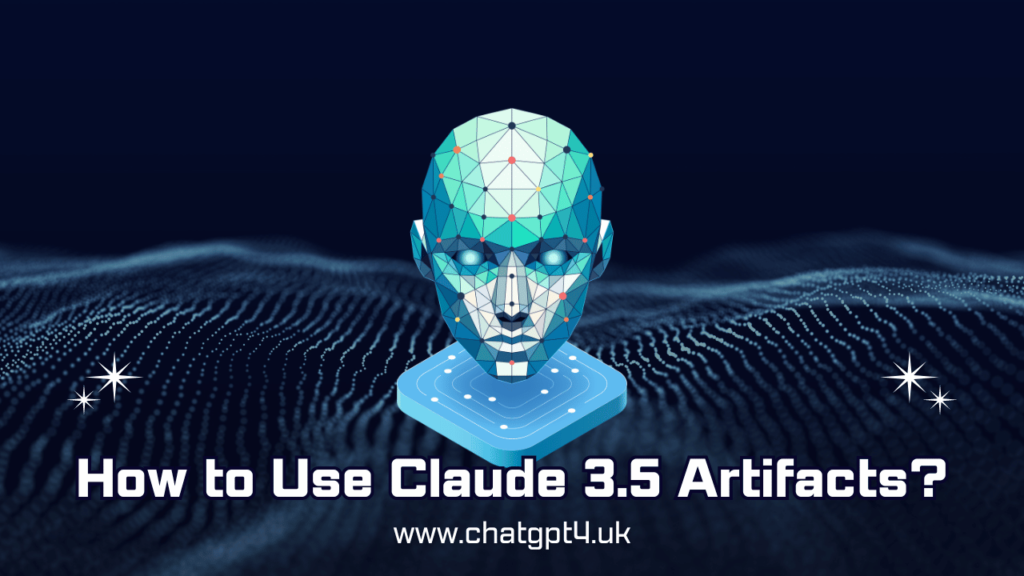How to Use Claude 3.5 Artifacts? Claude 3.5, an advanced version of the AI language model developed by Anthropic, provides various features to enhance its usability across different applications. One of its significant offerings is the use of artifacts, which enable users to save, manage, and reuse complex responses or tasks.
This article will cover everything you need to know about using Claude 3.5 artifacts, including their definition, setup process, use cases, and practical tips.
1. What Are Claude 3.5 Artifacts?
Artifacts in Claude 3.5 are reusable pieces of content or task automation that users can create, store, and reference during interactions with the AI. Artifacts can be in the form of pre-built responses, complex workflows, code snippets, or even detailed research.
Essentially, they allow users to quickly invoke specific functions or information without having to generate responses from scratch.
2. Benefits of Using Claude 3.5 Artifacts
Claude 3.5 artifacts come with numerous benefits that streamline user experience and improve productivity:
- Efficiency: Reduce time spent on repetitive tasks by automating workflows or storing frequently used responses.
- Consistency: Ensure the same quality and tone of responses across different interactions by using pre-made artifacts.
- Scalability: Handle more complex queries or processes without needing to re-train or input extensive prompts.
- Customization: Tailor artifacts to suit your specific needs, such as business processes or research tasks.
3. How to Set Up Claude 3.5 Artifacts
Setting up artifacts in Claude 3.5 is simple and can be done in a few steps:
- Access the Claude 3.5 Interface: Log into your Claude 3.5 platform via your preferred interface, whether web-based or through an API.
- Create a New Artifact: Navigate to the artifacts section and click on “Create New Artifact.” Name your artifact based on its intended purpose.
- Define the Artifact’s Content: Add the necessary content, workflow, or code that you want to store. For example, if you frequently use a specific dataset or response structure, you can save it as an artifact.
- Save the Artifact: Once you’ve defined the artifact, click “Save.” This stores the artifact for future use.
- Test the Artifact: Use it in a conversational prompt to ensure that it works as intended.
4. How to Access and Manage Claude 3.5 Artifacts

Accessing Artifacts
After creating artifacts, accessing them is straightforward:
- In a new interaction, type a command or use a shortcut to call the specific artifact.
- You can also manually browse the list of available artifacts by clicking on the “Artifacts” tab in the Claude interface.
Managing Artifacts
To keep your artifacts organized:
- Edit Existing Artifacts: If you need to update an artifact, select it and click “Edit” to make changes.
- Delete Unused Artifacts: To free up space, delete outdated or irrelevant artifacts by selecting them and clicking “Delete.”
- Categorize Artifacts: Use folders or tags to organize your artifacts based on use case, content type, or project.
5. Common Use Cases of Claude 3.5 Artifacts
Artifacts in Claude 3.5 can be utilized in various contexts. Some popular use cases include:
| Use CaseDescriptionCustomer SupportStore pre-written responses for frequently asked customer queries. | |
|---|---|
| Code Automation | Save code snippets or workflows that can be reused across multiple projects. |
| Research and Analysis | Store research summaries or specific reference points to use in future projects. |
| Content Creation | Save template responses for social media posts, blogs, or other written content. |
6. Tips for Maximizing Claude 3.5 Artifacts
- Use Structured Data: Store artifacts in a clear and structured format (e.g., tables, bulleted lists) for easier referencing.
- Name Artifacts Clearly: Make sure to give your artifacts descriptive names so they are easy to find.
- Update Artifacts Regularly: Periodically review and update your artifacts to keep them relevant to your ongoing work.
- Combine Artifacts with Automation Tools: Link your artifacts to external APIs or automation tools to further enhance their efficiency.
7. Claude 3.5 Artifacts Comparison Table
Here’s a comparison table showing how Claude 3.5 artifacts stack up against other AI automation tools:
| Feature | Claude 3.5 Artifacts | GPT-4 Macros | OpenAI Fine-Tuning |
|---|---|---|---|
| Ease of Use | High | Medium | Low |
| Customization | High | Medium | High |
| Efficiency | Very High | Medium | Medium |
| Cost | Affordable | Expensive (API-heavy) | Expensive |
| Best For | All user types | Developers | Large-scale automation |
| Learning Curve | Low | Moderate | High |
8. FAQs on Claude 3.5 Artifacts
Q1: What can be stored in Claude 3.5 artifacts?
Artifacts can store text, code, templates, and workflows. They’re flexible and can accommodate different types of content based on the user’s needs.
Q2: Can I share artifacts with other users?
Yes, Claude 3.5 artifacts can be shared with other users by exporting and importing them within collaborative platforms.
Q3: Are there any limitations on the number of artifacts I can create?
While Claude 3.5 allows users to create numerous artifacts, there may be limitations based on the subscription plan or memory capacity.
Q4: Can I use artifacts in multiple projects?
Yes, artifacts can be reused across various projects or tasks, making them highly versatile.
Q5: How secure are the stored artifacts?
Claude 3.5 artifacts are stored in a secure environment, and data protection measures are in place to ensure the privacy of user information.
Conclusion
Claude 3.5 artifacts are powerful tools for automating workflows, managing data, and enhancing overall productivity. Whether you’re a developer, a content creator, or a researcher, these artifacts can help you streamline your processes and maintain consistency.
By following the steps in this guide, you can easily set up, manage, and optimize Claude 3.5 artifacts for your specific needs.







